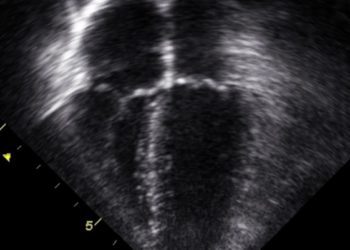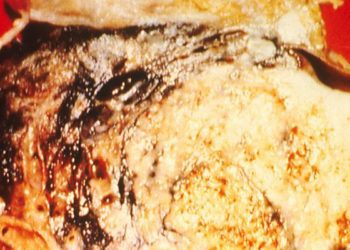Novel aromatase inhibitor, ODM-201, may be safe and effective for prostate cancer
1. In a phase I trial, ODM-201 was well tolerated up to 1800mg per day in prostate cancer patients, without reaching the maximum tolerated dose.
2. In a phase II trial, up to 33% of patients randomized to ODM-201 had a 50% or greater decrease in serum PSA at 12 weeks.
Evidence Rating: 2 (Good)
Study Rundown: Androgen receptor (AR) antagonists, such as enzalutamide, have been shown in randomized controlled trials to increase survival in castration-resistant, metastatic prostate cancer. ODM-201 is a rationally designed pharmaceutical with a novel structure that has a higher binding affinity to the AR. In the phase I study reported in this article, patients were sequentially assigned to open-label doses of ODM-201 escalating from 200 to 1800mg per day. The most common adverse events were fatigue and asthenia. Only one patient developed Grade 3 toxicity. In the phase II portion of the article, patients were randomized to 200, 400, and 1400mg daily of ODM-201. After 12 weeks, 29%, 33%, and 33% of patients in the 200, 400, and 1400mg groups had PSA decrease of 50% or greater compared to onset of treatment. These trials are intrinsically limited by the small sample sizes and lack of a control arm (e.g. standard of care) for comparison. It has however, met criteria to move onto a full, phase III trial.
Click to read the study in The Lancet Oncology
Relevant reading: Increased Survival with Enzalutamide in Prostate Cancer after Chemotherapy
In Depth [Phase I/II Clinical Trial]: In the phase I trial, 4 patients were assigned to the 200mg group, 7 to the 400mg, 3 to the 600mg, 4 to the 1000mg, 3 to the 1400mg, and 3 to the 1800 mg group. The median time on ODM-201 treatment was 24.8 months. 116 of 125 reported adverse events were grade 1-2. The most common being fatigue and asthenia in 42% of patients, diarrhea in 29%, arthralgia in 25%, back pain in 25%, and headache in 21% of patients. There was one grade 3 case of fatigue reported. The maximum tolerated dose, defined as a grade 4 or higher adverse event, was not observed. In the phase II trial, 38 patients were randomly assigned to 200mg ODM-201, 37 to 400mg, and 35 to 1400mg. The median time on treatment was 11.0 months. After 12 weeks of follow-up, 29% of patients in the 200mg group, 33% in the 400mg group, and 33% in the 1400mg group had a PSA response, defined as above. The greatest absolute proportion of response was in patients who were chemotherapy and CYP17 inhibitor naïve. For the phase II trial, the authors pre-determined that a sample size of 8 assessable patients per dose would confer 80% confidence to reject a PSA response rate of 55% or less at a 1-sided significance level of 0.2, assuming the true response rate to be 70%.
More from this author: Erlotinib does not demonstrate increased survival in ovarian epithelial carcinomas, Afatinib shows increased progression-free survival in non-small-cell lung cancer, Radiosurgery alone may be effective for some arteriovenous malformations, Escalated-dose radiotherapy did not increase survival in prostate cancer, Stereotactic radiosurgery promising for patients with multiple brain metastases
Image: PD
©2012-2014 2minutemedicine.com. All rights reserved. No works may be reproduced without expressed written consent from 2minutemedicine.com. Disclaimer: We present factual information directly from peer reviewed medical journals. No post should be construed as medical advice and is not intended as such by the authors, editors, staff or by 2minutemedicine.com. PLEASE SEE A HEALTHCARE PROVIDER IN YOUR AREA IF YOU SEEK MEDICAL ADVICE OF ANY SORT.









